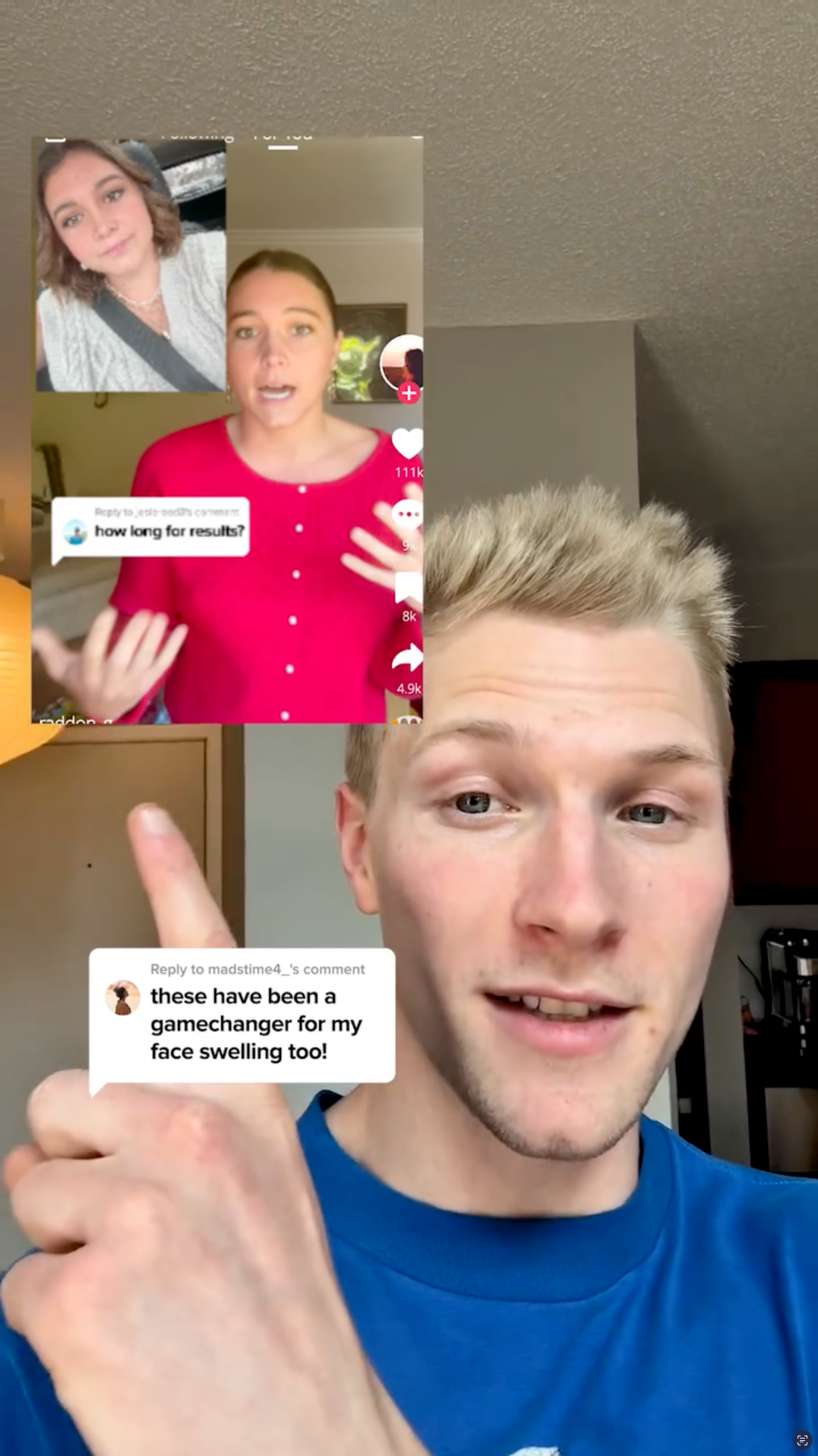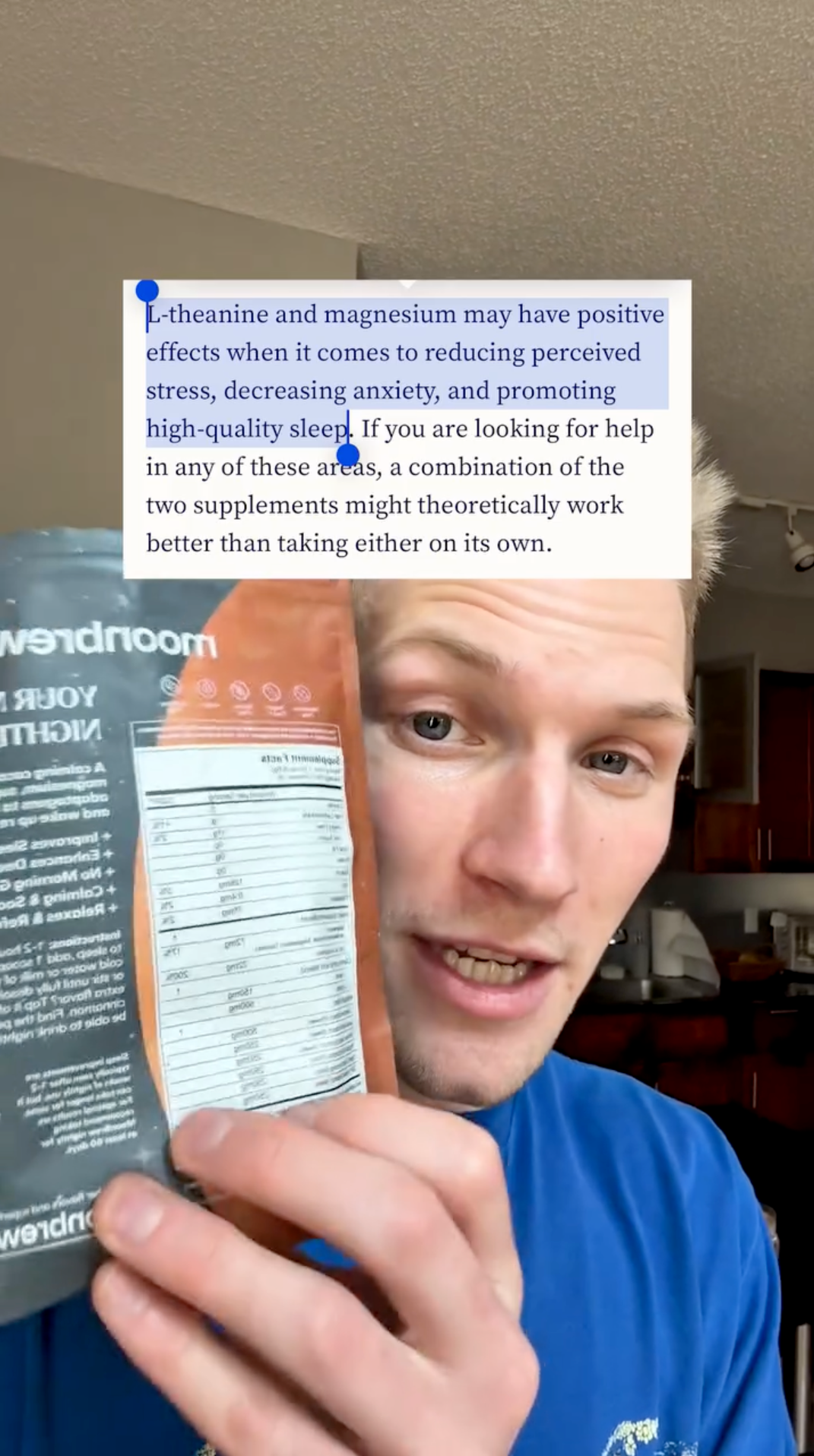Good Ad or Bad Ad: Breaking Down a Winning Video Ad (Moon Brew Video Ad Breakdown) PT. 1
Learn the 5 direct response principles behind winning video ads. Real Moon Brew video breakdown shows exactly why good ads convert.
Ever wonder what separates a mediocre video ad from one that consistently drives sales? Most brands throw money at video content hoping something sticks, but the highest-performing ads follow specific direct response principles that have worked for decades.
Today we're diving deep into a real Moon Brew video ad that scored 8-9 out of 10 using our proven framework. This isn't just theory—we're breaking down exactly why this ad works and how you can apply the same principles to your own video marketing campaigns.
What Makes a "Good Ad" vs a "Bad Ad"
Before we break down this specific ad, let's establish the criteria. A good direct response video ad uses proven psychological principles that drive action, not just awareness.
Bad ads focus on:
- Looking pretty without driving conversions
- Following trends without strategic purpose
- Entertainment over persuasion
- Vague messaging without clear offers
Good ads strategically combine:
- 6-8 direct response principles working together
- Clear problem identification and solution
- Social proof and credibility markers
- Strong offers with urgency
- Specific calls-to-action
The Moon Brew ad we're analyzing today checks almost all these boxes, which is why it earned such a high score.
The Moon Brew Ad: First Impressions
The ad opens with: "Proof is in the pudding. This is what I used to look like before taking hot cocoa. And this is what my jaw looks like after taking it."
Right out of the gate, this ad makes a bold claim with visual evidence. No slow build-up, no brand story—just immediate transformation proof. This hooks viewers in the first 3 seconds, which is critical when average attention spans for video content are measured in seconds, not minutes.

Principle 1: Intensification Through Before/After
What is Intensification?
Intensification is one of the most powerful direct response principles. It involves demonstrating dramatic transformation or amazing results that viewers can see with their own eyes.
Think of classic infomercials like ShamWow or OxiClean—they don't just tell you the product works, they show you undeniable proof.
How Moon Brew Uses It
The ad opens with a clear before/after image showing visible facial transformation. This works because:
- It's visual proof, not just claims
- Anyone can understand it instantly
- It creates curiosity about what caused the change
- It's relatable to viewers experiencing similar issues
The beauty of this approach is that it front-loads the most compelling element. Even if someone only watches the first 5 seconds, they've seen the transformation.
Why This Works for Health and Beauty Products
For skincare content, fitness marketing, and health product videos, before/after demonstrations are incredibly effective because:
- Physical changes are easy to document
- Results speak louder than claims
- Viewers can imagine themselves achieving similar results
- It builds immediate credibility
According to Facebook's Creative Best Practices, ads that demonstrate clear product benefits in the first few seconds have significantly higher engagement rates.
Principle 2: Social Proof and the Bandwagon Effect
The Psychology Behind It
After establishing the transformation, the ad mentions: "And this is the girl that helped me find out about this, and this one too."
This taps into social proof—the psychological principle that people look to others when making decisions. When we see others using a product successfully, we're more likely to trust it.

The Bandwagon Effect Explained
The bandwagon effect is our tendency to adopt beliefs and behaviors because others are doing the same. This ad uses it by showing:
- Multiple people using the product
- Implicit endorsement from trusted sources
- Community around the solution
- "You're not alone in this problem" messaging
How to Implement Social Proof
For your own video ads, include:
- Customer testimonials with real people
- Usage statistics ("Join 50,000+ customers")
- Expert endorsements when possible
- User-generated content showing real results
- Community elements (reviews, ratings, comments)
This works particularly well for beauty video ads, cosmetics marketing, and wellness content where peer recommendations carry significant weight.
Principle 3: Transfer Credibility Via Osmosis
The Science Section
The ad states: "People go crazy for this because there's magnesium glycinate and L-theanine in the blend, and these two work together to reduce your stress levels."
This is what we call transferring credibility via osmosis. The product borrows authority from:
- Scientific-sounding ingredients
- Research-backed components
- Clinical terminology
- Visual evidence (showing the ingredients on screen)

Why Ingredient-Focused Messaging Works
When you mention specific ingredients with known benefits, you're not just making claims—you're leveraging existing knowledge and credibility. Studies show that consumers trust products more when they understand the "why" behind the benefits.
This principle is especially powerful for:
- Health product videos explaining supplement ingredients
- Skincare content highlighting active components
- Wellness content referencing clinical research
- Supplement advertisements backing up claims
Avoiding the Trap
The key is mentioning ingredients without getting too technical. The ad doesn't explain complex biochemistry—it simply states that these two ingredients "work together to reduce stress levels." That's accessible and believable.
Principle 4: Problem Framing and Escalation
Building the Problem Narrative
After establishing the solution, the ad reframes the problem: "And sometimes that's the exact reason why our face looks like... this happening. And did you know when we're stressed, we're holding onto so much salt in our body, which then makes us hold on to water weight..."
This is brilliant problem framing because it:
- Identifies the root cause (stress and overwhelm)
- Connects to physical symptoms (cortisol face)
- Escalates the consequences (holding salt, water weight)
- Validates the viewer's experience (you're not imagining this)

The Power of Named Problems
Notice the use of "cortisol face"—a specific term for a specific condition. We use the same strategy with brands like Ryze, coining terms like "meno belly" to give a name to a problem many people experience but don't know how to describe.
Naming the problem makes it:
- More real and tangible
- Easier to discuss and search for
- More memorable
- More shareable
How to Apply Problem Escalation
For your own fashion campaigns, fitness video marketing, or health advertisements:
- Start with the surface problem (physical appearance)
- Dig into the root cause (biological/lifestyle factors)
- Show the escalation path (how it gets worse)
- Validate the experience (you're not alone)
- Position your solution as addressing the root cause
This framework works because it helps viewers understand their problem better before presenting the solution.
Principle 5: Elevating Core Desires
The LF8 Framework
The ad continues: "And I've been really stressed out lately and overwhelmed, so I was going to see my doctor about what was going on, but after I started taking one scoop of this a day, it has helped my mental health and my brain work at an optimum."
This taps into what we call the LF8 Core Desires—the eight fundamental human motivations that drive all purchasing decisions. This ad specifically targets:
1. Survival, Enjoyment of Life, Life Extension
- "Mental health" improvement
- Brain working "at an optimum"
- Freedom from stress and overwhelm
2. Freedom from Fear, Pain, and Danger
- Relief from physical symptoms (cortisol face)
- Addressing underlying health concerns
- Peace of mind from natural solution
3. Social Approval and Belonging
- Visual transformation (before/after face)
- Looking better in social situations
- Confidence improvement
Why Core Desires Matter More Than Features
People don't buy products—they buy outcomes and feelings. According to research from Harvard Business School, 95% of purchasing decisions are made subconsciously based on emotional drivers.
The Moon Brew ad doesn't focus on taste, packaging, or price point. It focuses on:
- How you'll feel
- How you'll look
- How your life will improve
- How your stress will decrease
Implementing Core Desires in Your Ads
For clothing brand videos, apparel video marketing, or any product category:
Identify which core desires your product addresses:
- Survival and health
- Enjoyment of food and beverages
- Freedom from pain
- Care and protection of loved ones
- Social approval
- Superior outcomes
- Comfortable living conditions
- Feeling superior to others
Then build your messaging around those desires, not just product features.
What This Ad Could Improve
The Missing Element: Risk Reversal
Despite scoring 8-9 out of 10, this ad is missing one crucial element: risk reversal.
The ad ends with: "They're having a crazy 23% off sale right now, so I'll leave a link right here so you can try them out."
What's missing? A 30-day money-back guarantee or similar risk reversal mechanism.
Why Risk Reversal Matters
According to Baymard Institute research, one of the top reasons for cart abandonment is purchase anxiety. Risk reversals like money-back guarantees:
- Remove the fear of making a bad purchase
- Shift risk from buyer to seller
- Increase conversion rates by 10-30%
- Build trust and credibility
- Make the offer feel "irresistible"
The Complete Offer Formula
The ad does include:
- Scarcity: "next three days" time limit
- Discount: 23% off sale
- Clear CTA: "link right here"
To make it perfect, add:
- Risk reversal: "30-day money-back guarantee"
- Bonus: "Plus free shipping"
- Urgency: "Limited quantities available"
This transforms a good offer into an irresistible one.
How to Apply These Principles to Your Ads
The 5-Principle Framework
Based on this Moon Brew breakdown, here's how to create your own high-converting video ads:
1. Open with Intensification
- Show dramatic before/after
- Demonstrate amazing results
- Lead with visual proof
- Hook attention in 3 seconds
2. Add Social Proof Early
- Mention other users
- Show testimonials
- Reference popularity
- Create bandwagon effect
3. Transfer Credibility
- Mention key ingredients or features
- Reference research or science
- Show evidence on screen
- Use authoritative language
4. Frame and Escalate the Problem
- Name the specific problem
- Explain the root cause
- Show escalation path
- Validate the viewer's experience
5. Tap into Core Desires
- Focus on emotional outcomes
- Address multiple desire categories
- Show transformation potential
- Make it personal and relatable
Industry-Specific Applications
For Beauty and Skincare:
- Before/after transformations work extremely well
- Ingredient spotlights build credibility
- Tutorial-style content can incorporate these principles
- Focus on confidence and social approval desires
For Fitness Marketing:
- Physical transformations are powerful hooks
- Progress tracking adds social proof
- Core desires: health, superior outcomes, social approval
- Problem escalation around health consequences
For Fashion and Apparel:
- Style transformations (before/after outfits)
- Social proof through influencer/peer usage
- Core desires: social approval, feeling superior
- Problem framing around confidence and self-expression
For Health and Wellness:
- Clinical ingredient credibility
- Health outcome transformations
- Core desires: survival, freedom from pain
- Problem escalation around health risks
Testing Your Implementation
Create three test ads using this framework:
Test 1: Intensification-Heavy
- 60% before/after and demonstrations
- 40% other principles
Test 2: Social Proof-Heavy
- 60% testimonials and community
- 40% other principles
Test 3: Balanced Approach
- Equal weight across all 5 principles
- Follow Moon Brew structure closely
Track which performs best for your specific audience and product category.
Getting Started Today
Your Action Plan
Week 1: Audit Your Current Ads
- Identify which principles you're using
- Note which ones are missing
- Score each ad 1-10 using this framework
- Prioritize improvements
Week 2: Create Test Variations
- Recut existing footage using these principles
- Add missing elements (social proof, risk reversal)
- Test before/after opens vs. current hooks
- Implement problem framing language
Week 3: Produce New Content
- Plan shoots around the 5 principles
- Gather before/after footage
- Capture social proof testimonials
- Film ingredient/feature demonstrations
Week 4: Analyze and Iterate
- Compare new ads against old performance
- Identify which principles work best for your brand
- Double down on winning combinations
- Build these principles into your creative process
Tools and Resources
For Video Production:
- Use mobile-first filming for authentic UGC feel
- Keep editing simple and focused
- Prioritize clear audio over perfect visuals
- Learn more about effective video production
For Testing and Optimization:
- A/B test different principle combinations
- Track engagement by section
- Monitor completion rates
- Facebook Ads Manager best practices
For Team Building:
- Consider working with a UGC agency for proven frameworks
- Build internal teams around the Creative Strategist model
- Train team members on direct response principles
- Systematize your creative process
Ready to Create Ads That Consistently Convert?
The Moon Brew ad scored 8-9 out of 10 because it systematically applied proven direct response principles that have worked for decades. It wasn't luck or creativity—it was strategy.
The principles are timeless:
- Intensification builds instant credibility
- Social proof removes skepticism
- Transferred credibility provides rational justification
- Problem framing creates urgency
- Core desires drive emotional connection
The execution is learnable. You don't need a massive budget or fancy production. You need a systematic approach that combines these psychological principles in compelling ways.
Whether you're creating beauty video ads, fashion campaigns, fitness marketing content, or health product videos, these principles work across all industries because they tap into fundamental human psychology.
Start with one principle. Master it. Then add another. Before long, you'll be creating ads that consistently score 8-9 out of 10—ads that drive real revenue, not just views.
Ready to implement a proven system for creating high-converting video ads? Get started with our comprehensive video ad framework and join brands achieving 50% hit rates consistently.
Join The Dark Side Of Video Ads

